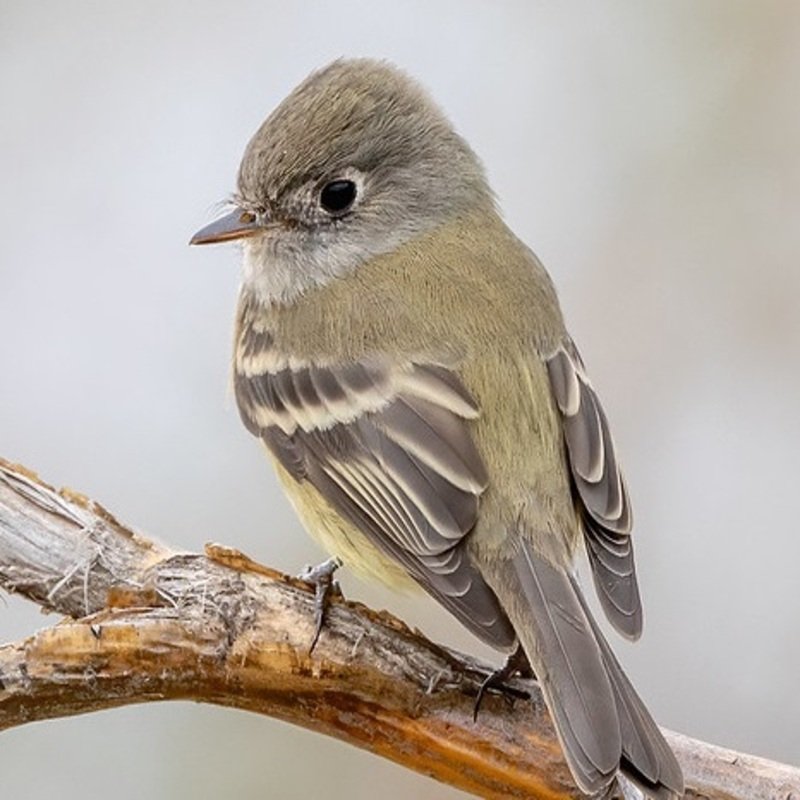The Cordilleran flycatcher, Empidonax occidentalis is a small insectivorous bird that lives in the Cordillera. Numerous species in this genus share a striking resemblance in appearance. The greatest methods for identifying species are by their vocalizations, breeding habitats, and ranges. This bird bears a striking resemblance to the Pacific-slope flycatcher. Previously, these two species were considered to be a single species known as the western flycatcher.
Quick Overview: Empidonax Occidentalis – Cordilleran Flycatcher
Body size: Around 5.5-6 in (14-15 cm) and a weight of 11 g (0.4 oz)
Main colors: Olive-gray, Yellow, White
Range: Western United States
Migratory Bird: Yes
Best time of the year to see in the U.S.: June, July, August, September
Conservation Status: Least Concern
Cordilleran flycatcher Description
Adults are olive-gray above, darker on the wings and tail, and yellowish below; they have a prominent teardrop-shaped white eye-ring, white wing bars, a tiny bill, and a short tail.

Size
These birds have a length of 5.5-6 in (14-15 cm) and a weight of 11 g (0.4 oz). Their wings could range from 8-9 in (20-23 cm).
Feeding
Primarily insects. The diet differences between this species and the Pacific-slope Flycatcher are unknown. The combined food of the two species consists primarily of insects, particularly small wasps, bees, flies, caterpillars, moths, and beetles. Additionally, it consumes spiders and a few berries and seeds.
Habitat
The Cordilleran Flycatcher is found mostly in the Rocky Mountains, reaching southward into much of Mexico, whereas the Pacific-slope Flycatcher is found primarily in coastal regions.
Behavior
The Cordilleran flycatcher perches on an open shrub or low branch of a tree and flies out to capture insects in flight (hawking), as well as occasionally picking insects from foliage while hovering (gleaning). The song contains the notes pseet, ptsick, and seet, which are typically sung swiftly together. The ptsick or ptik note differs from the Pacific-slope flycatcher’s song in that the first syllable is higher pitched than the second.
Empidonax Occidentalis Scientific Classification
- Kingdom: Animalia
- Phylum: Chordata
- Subphylum: Chelicerata
- Class: Aves
- Order: Passeriformes
- Family: Tyrannidae
- Genus: Empidonax
- Species: Empidonax occidentalis
Best time of the year to see
The best time to see these birds in the United States is during the summer season (June – September).
Distribution of the Cordilleran flycatcher in the USA
Breeds from extreme southwestern Alberta to northern Mexico, passing through Nevada and the Rocky Mountains to Arizona, New Mexico, and western Texas. Winters south of the US-Mexico border, near central Mexico’s Pacific coast.
The Cordilleran flycatcher can be found in the following states in the United States – California, Washington, Oregon, Nevada, Idaho, Utah, Colorado, Wyoming, Montana, and Oklahoma.

